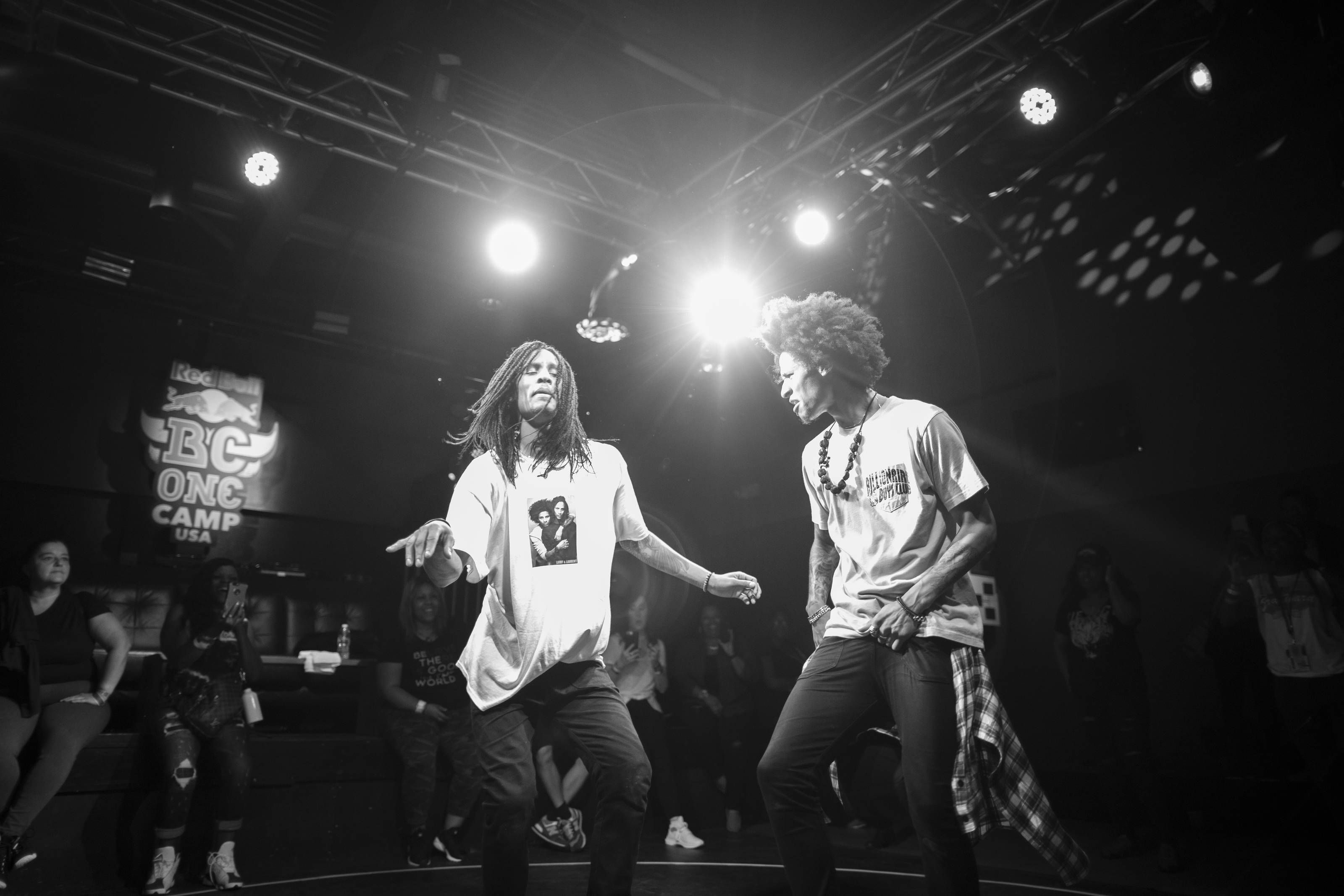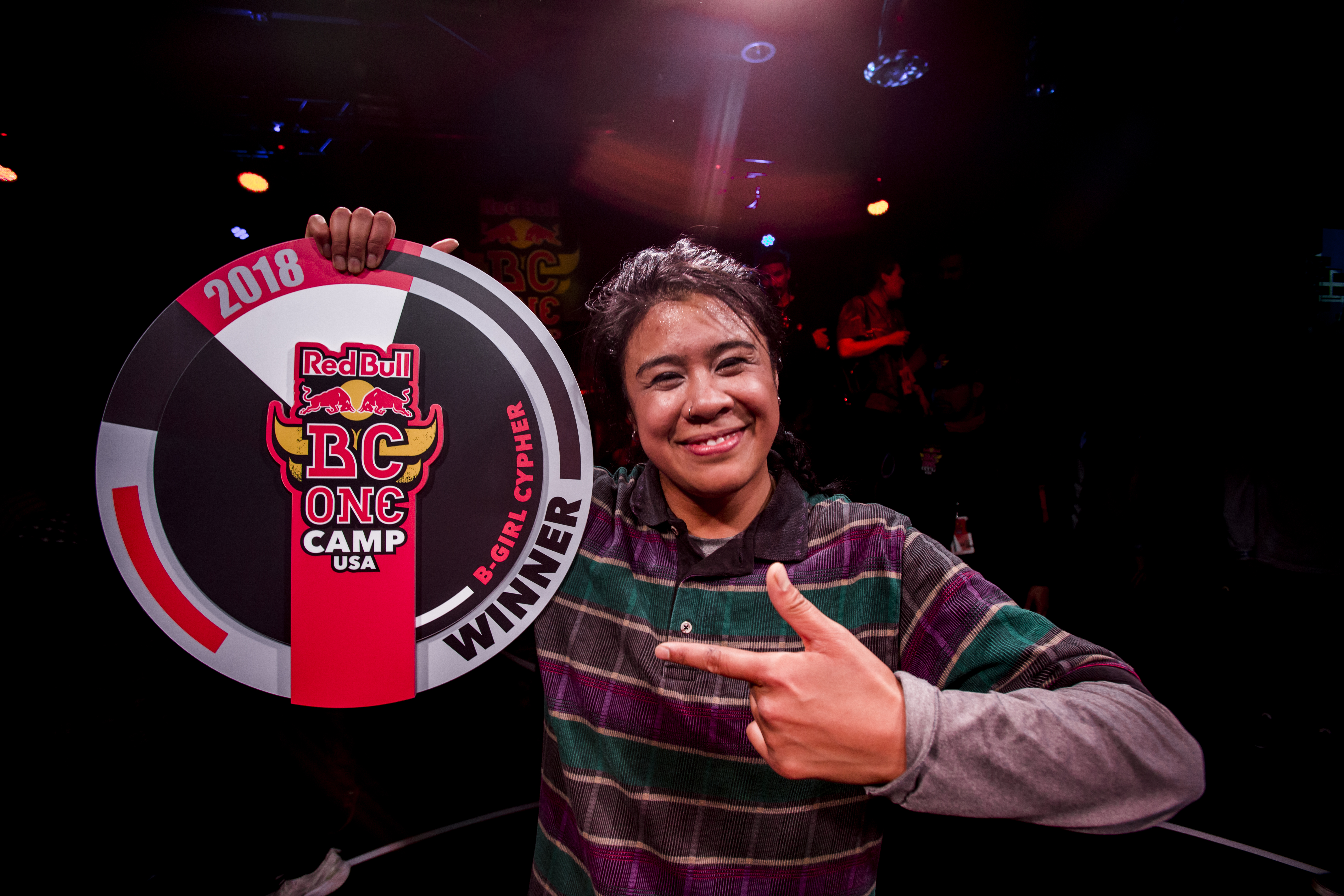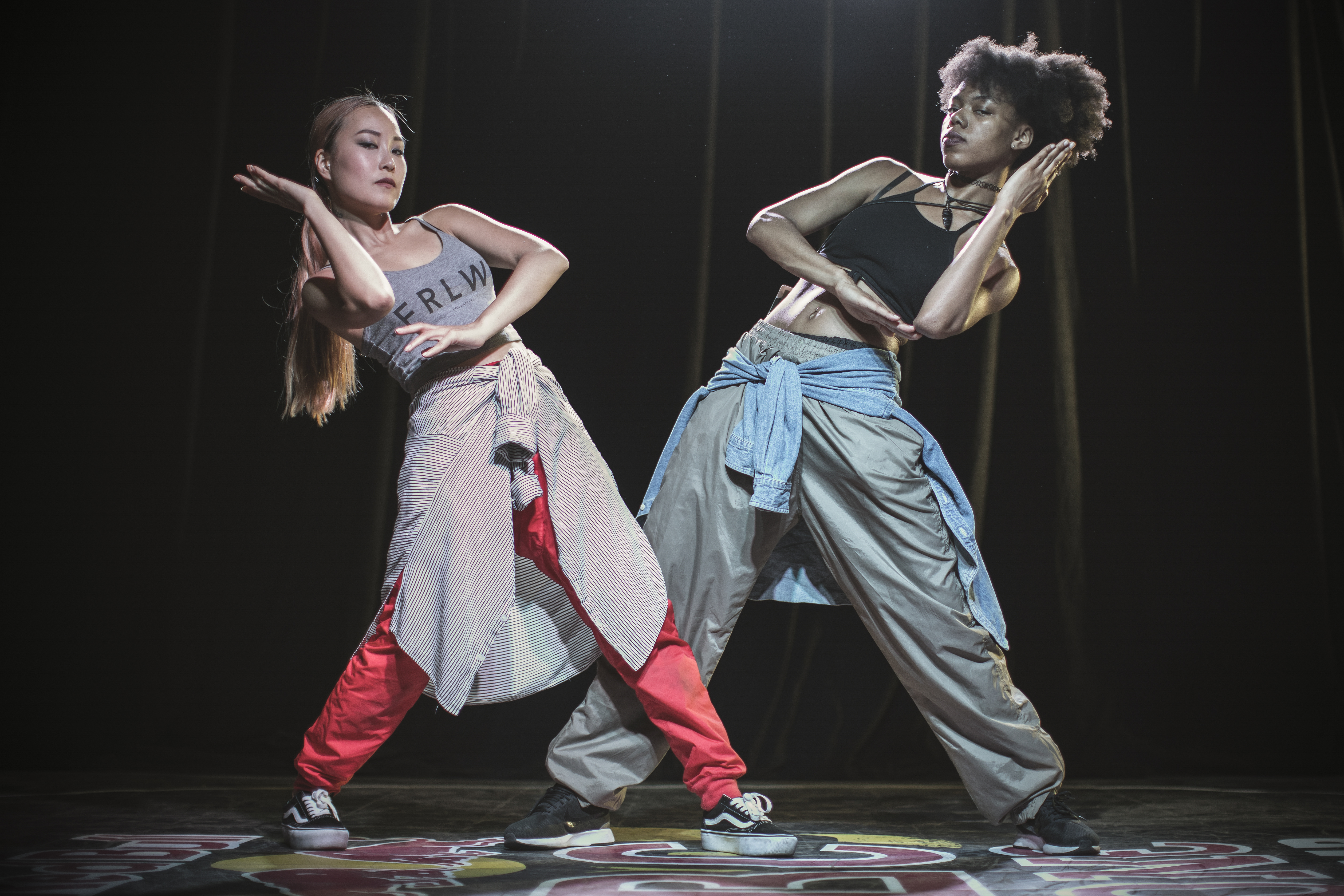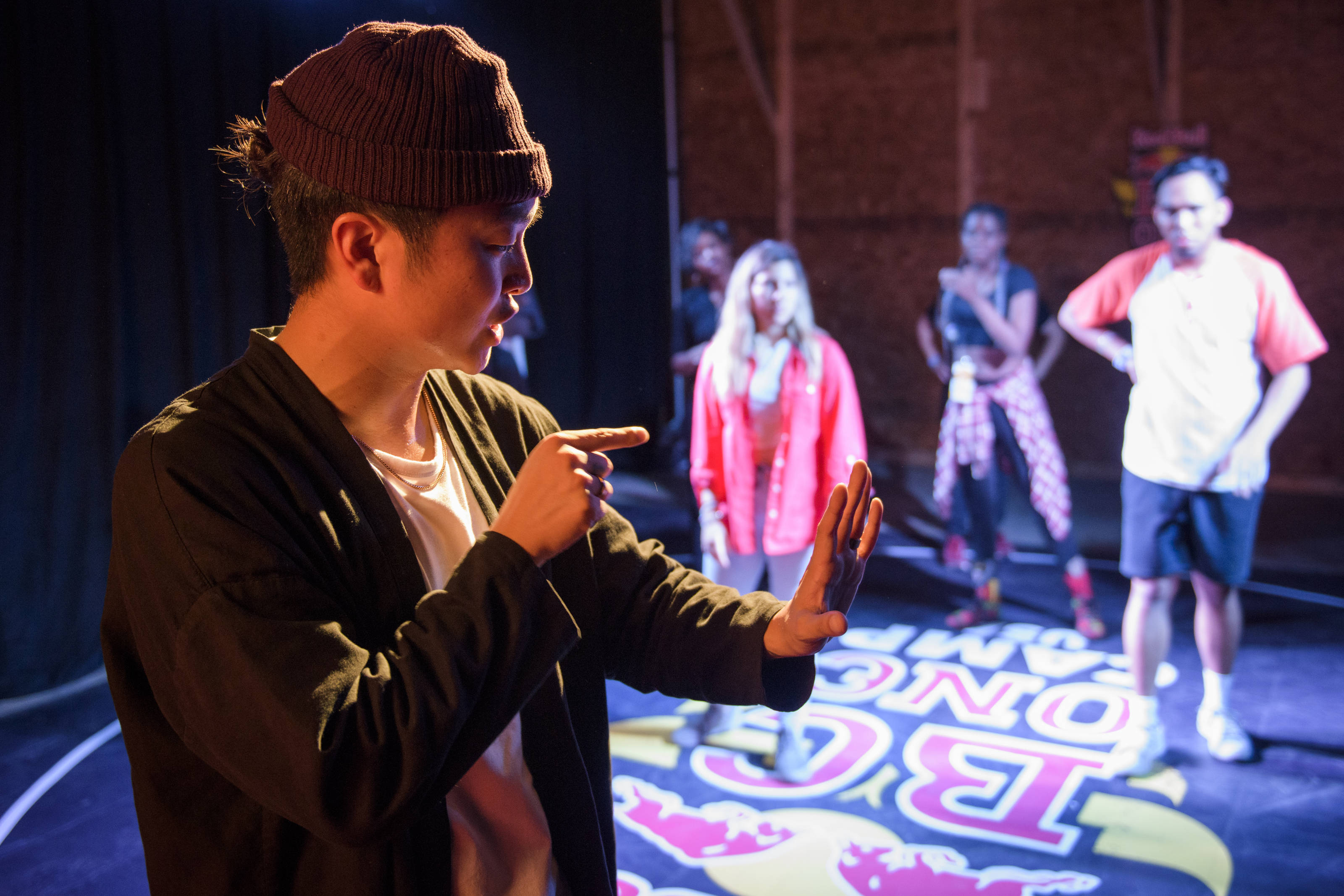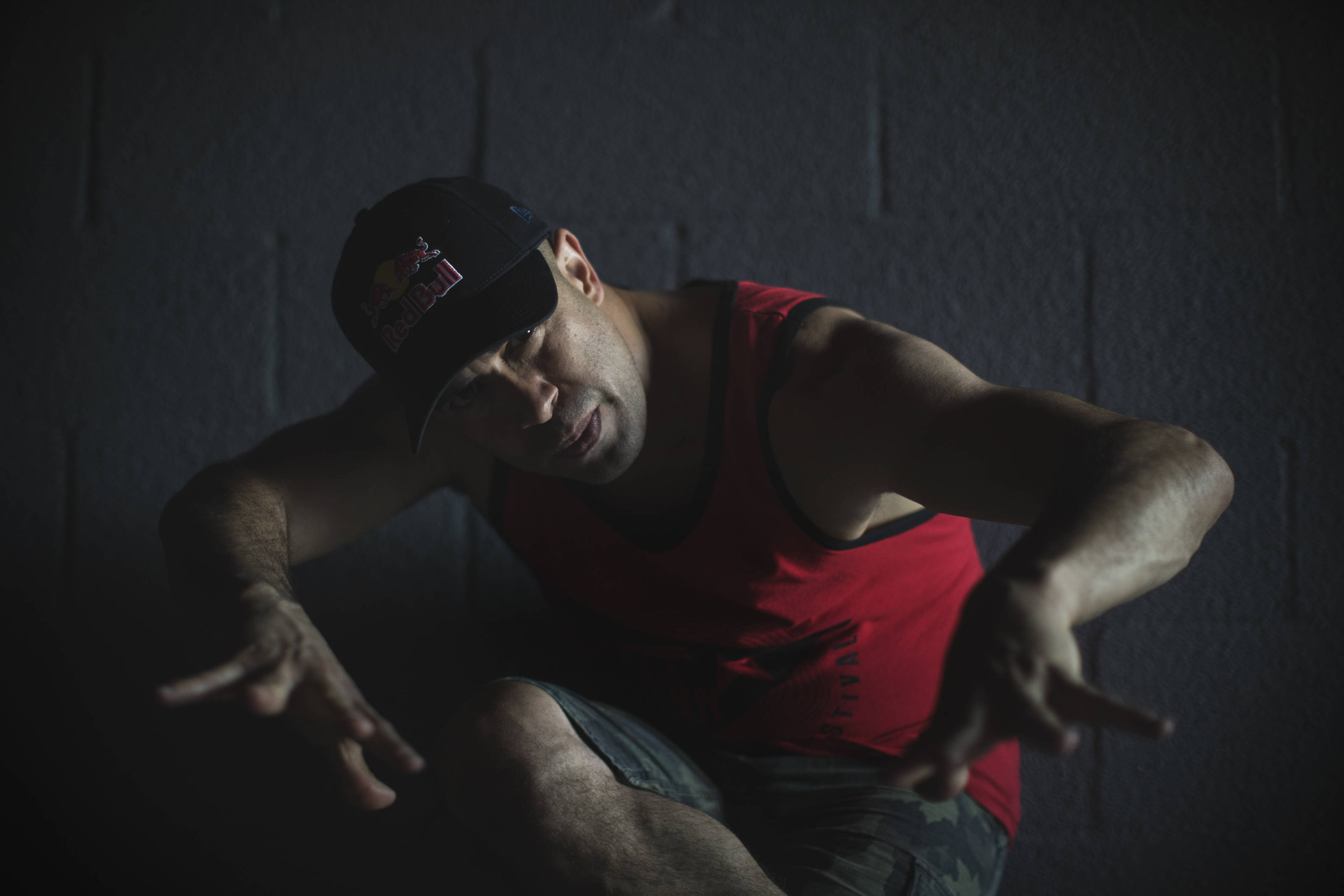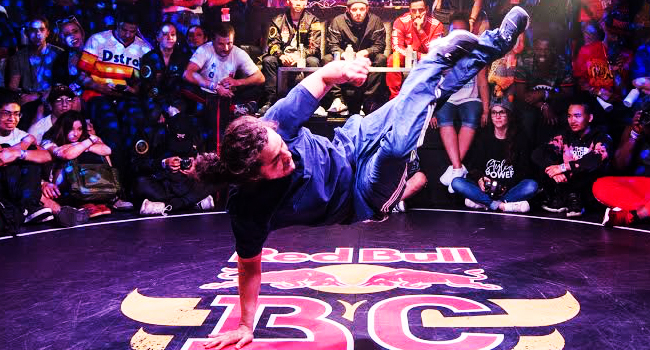
“Hip-hop was the only thing that didn’t look at me like, ‘Hey, he’s poor.'”
That’s a quote from Marlon Lizama, a member of Havikoro dance crew from Houston, and for him, hip-hop was an escape from poverty. But you could insert any adjective instead of “poor.” It’s the inclusivity and welcoming aspect of the artform that has pulled in those who didn’t feel like they fit into other areas of society. In breakdancing, Lizama discovered a community that embraced him. And that’s what I found when I went to the Red Bull BC One Camp in Houston, TX in April, a tightknit community who fell in love with the dance to find their place in the world, and won’t ever fall out of love with it for the very same reason.
Breakdancing is often a forgotten element of hip-hop, but it’s always been a part of the counterculture, a genre of dance that is disrespected merely because of where it began: the streets. The style claimed fame at parties and — because the attendees were a bunch of inner-city kids (listening to music that parents didn’t understand and participating in another one of the “ills” of the inception of the hip-hop era, graffiti) — they were looked down upon. The music, the clothing, the art, all of it was demonized. Even the U.S. Government was trying (and has continued to try) to defame the name of hip-hop by framing it as music that’s detrimental to society.
But even with its detractors trying to minimize its impact, hip-hop has evolved from a style of music to a thriving culture and breakdancing has evolved right along with it.
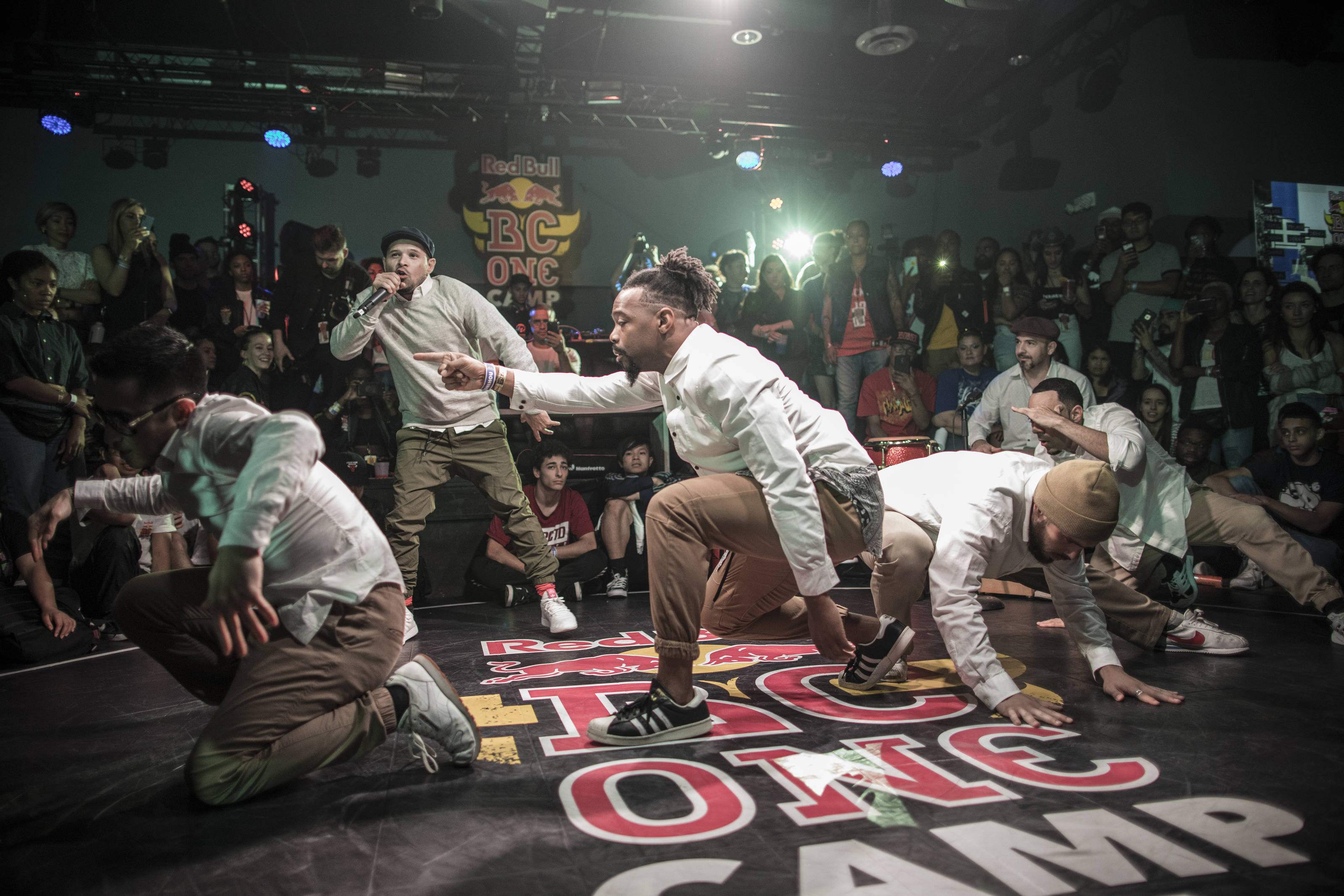
I remember when I fell in love with hip-hop. I always loved to dance and in elementary school my mother agreed to put me in a jazz dance class. That was cool…until I got into hip-hop, at the time called “street dance”. The music spoke to me because it was filled with people who looked like me, people who I could look up to. The posture was comfortable, and I felt free. I was intoxicated, even then, by the pounding 808s and the tick of the snares.
As I got older, I realized that there were some people who I would never be able to relate to, because they looked down on hip-hop culture. We used to have to pass around breaking and locking battle DVDs like we were running drug deals — secretly fighting over whether or not it was an offense to “steal” moves.
Hip-hop musicians and dancers showed kids artists who looked like them, who came from the places they came from and reminded them that there was more to life than what they knew. They taught them that they could aspire to be greater. And sure, not every hip-hop star was the best role model. There were poor decisions and struggles. But — like any young movement given time and space to mature — hip hop’s emissaries have grown up over time.
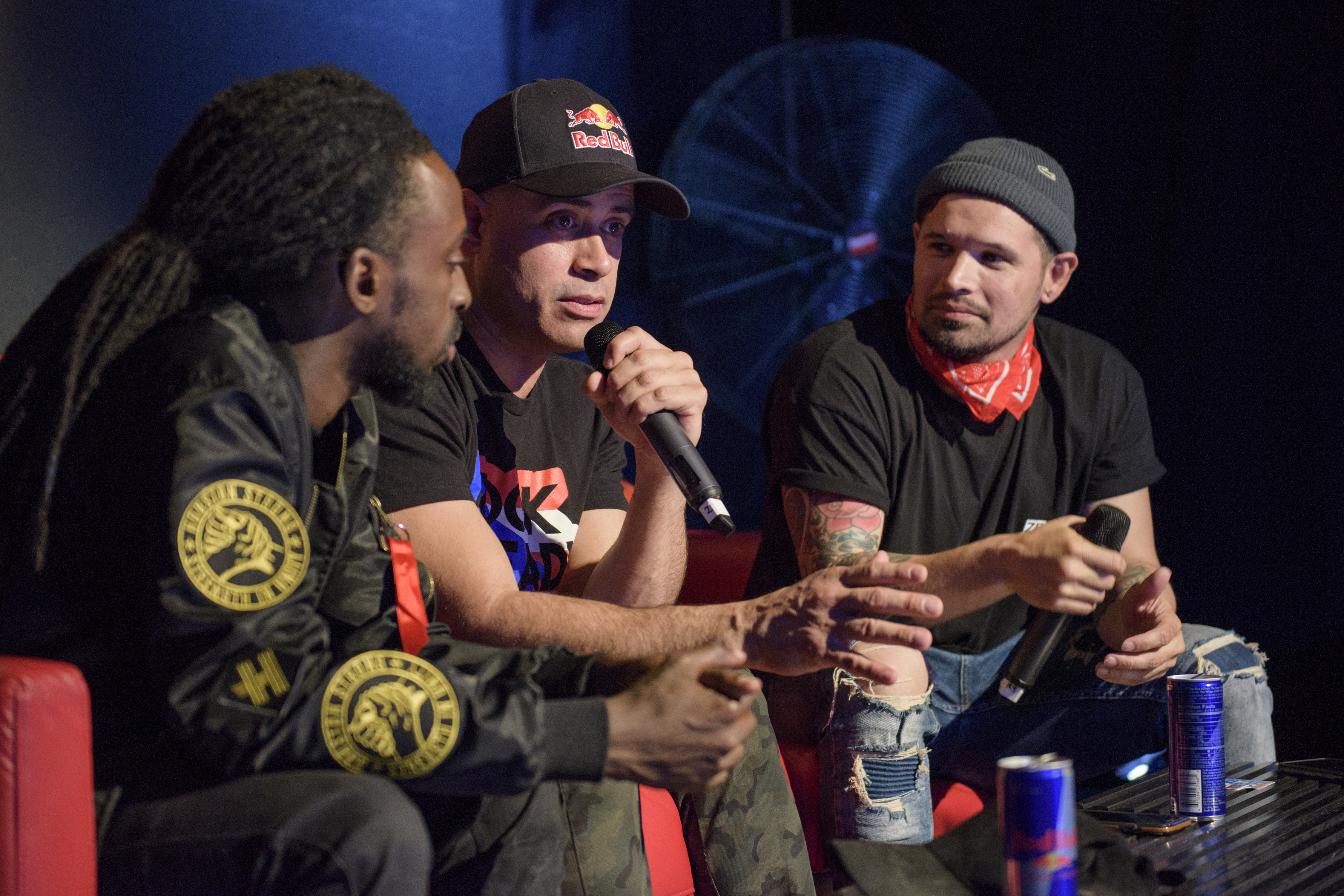
At the Red Bull camp, breakdancing OG Crazy Legs, talked about growing up in the Bronx at the inception of hip-hop and how the role models he looked up to may not have been the best (the first time he hung out with them they encouraged him to snatch a purse). In hindsight, he’s realized the problems he saw in his mentors were born out of the circumstances they were raised in. Now, he aims to change the way people look at hip-hop culture.
“If you look at any old school dude that’s spitting some venom at somebody, you’ll find out, normally there’s a bad situation happening in their lives, and it’s usually financial,” he said. “When you’re good financially, you love everybody!”
By touring with Red Bull, Crazy Legs is able to help the community that has given him so much. He wants to share his knowledge and experience with those coming up now. He’s working to show kids that the genre is a respected way to express themselves. And because of dance pioneers like Crazy Legs the kids who have been counted out for the way they dance, how their hair and clothing look, the music they listen to, or the neighborhoods in which they grew up, have a place to come together. They don’t have to feel like oddballs because they don’t want to dance in a leotard and tights. They get to find a whole crew of peers and role models who understand them, where they’re coming from, and the way they express themselves through the music.
One thing that was exciting for me in attending the Red Bull BC One Camp, was seeing all the different kinds of people who have embraced breakdancing. Hip-hop receives criticism (sometimes deserved) for not being inclusive of all, but lately, more and more women and members of the LGBTQIA community have taken interest in breaking and DJing. Because the face of hip-hop is very male, I loved seeing the special care that Red Bull took to include women with “B-girl Cypher” — an event in which the baddest ladies in the game go head to head for a title.
Watching the b-girls dance reminded me of why I wanted to dance in the first place: I love seeing people smile. The energy you feel from spectators as you perform and the respect you see in their eyes after you leave the dance floor can’t be matched. As a young woman, I remember feeling admired for more than just being “pretty” or being “popular” when I danced. Dance evoked a different kind of respect from men and women alike. And that was the look I saw on the faces of the b-girls after they finished competing. JK47, after KILLING IT during the battle, walked off the dance floor looking the same way I used to feel.
When I walked up to congratulate JK47, I could feel a very familiar energy, one that I had after performing and winning competitions. It was thrilling to see female poppers, lockers, and b-girls finding their own niche within the hip-hop dance community. Artists like Asia One, Dassy, and this year’s Red Bull B-Girl Cypher winner, JK47, are showing everyone that hip hop’s face isn’t male or female, gay or straight, or even a single ethnicity.
Dance is about expression, and all are welcome if they are willing to work hard, stay focused, and become a contributing part of the community.
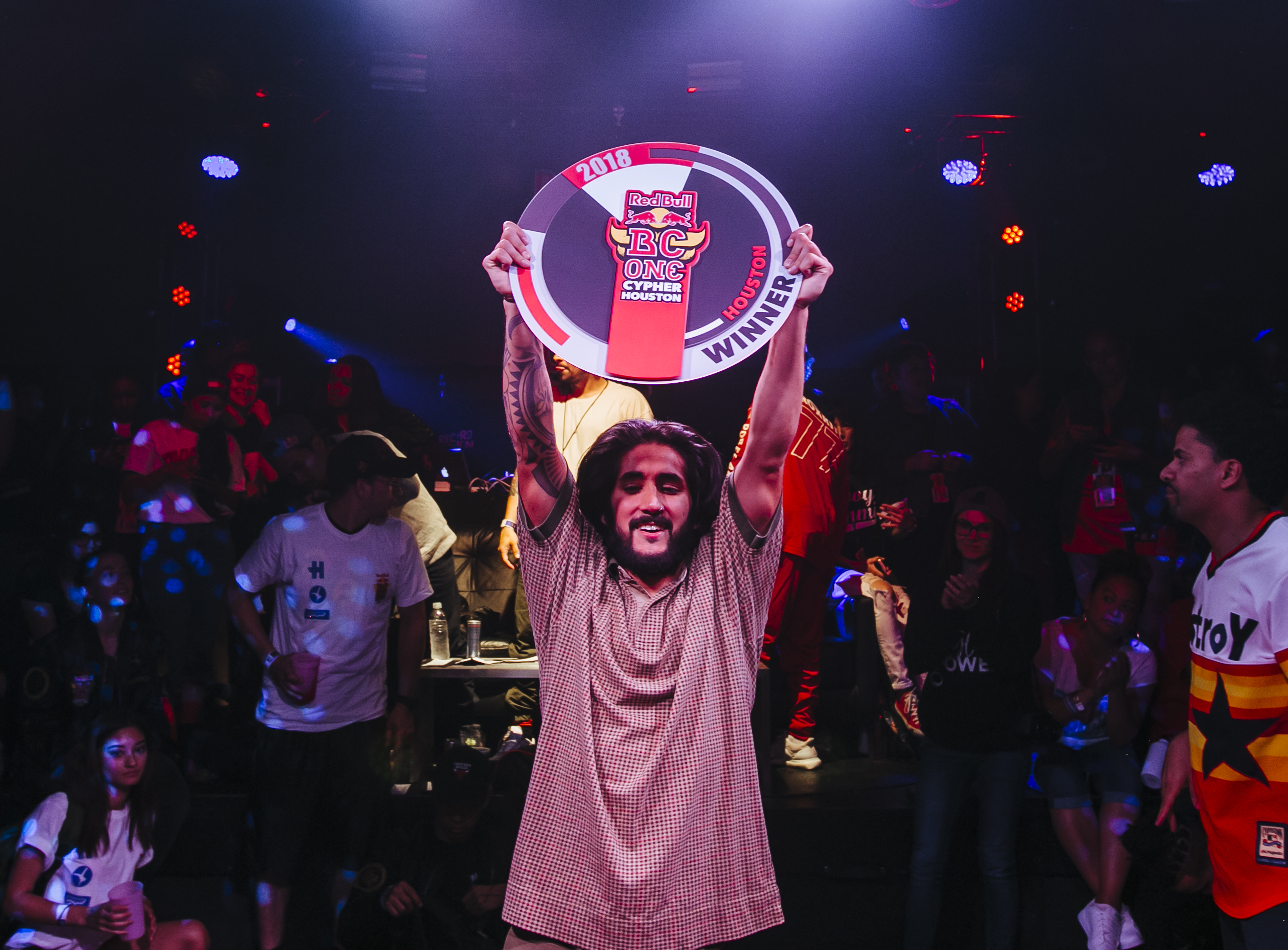
2018 marked the first time that the Red Bull BC One Camp was held in the United States, and the worldwide enthusiasm for the style was apparent — with the appearance of Les Twins, a duo hailing from France. Les Twins came up on the dance battle circuit when they were preteens and have since toured with Beyonce, appeared in numerous dance videos, had a stint in Cirque du Soleil, and have taught countless workshops for aspiring dancers. They constantly encourage dancers to feel the movements, not just execute them.
Laurent, one of the members of Les Twins, stressed that one of the reasons the culture is so appealing (and that so many people want to join) is because it’s a form of dance that doesn’t insist you have a ton of money to pay for classes, you can learn from others, on the street.
“My mom told us to never dance outside, like it was a dangerous thing to do,” he said. “But we see talent in cities where people don’t have money — like Brazil, like Paris, like some parts of Italy, in Spain, and some parts of London.”
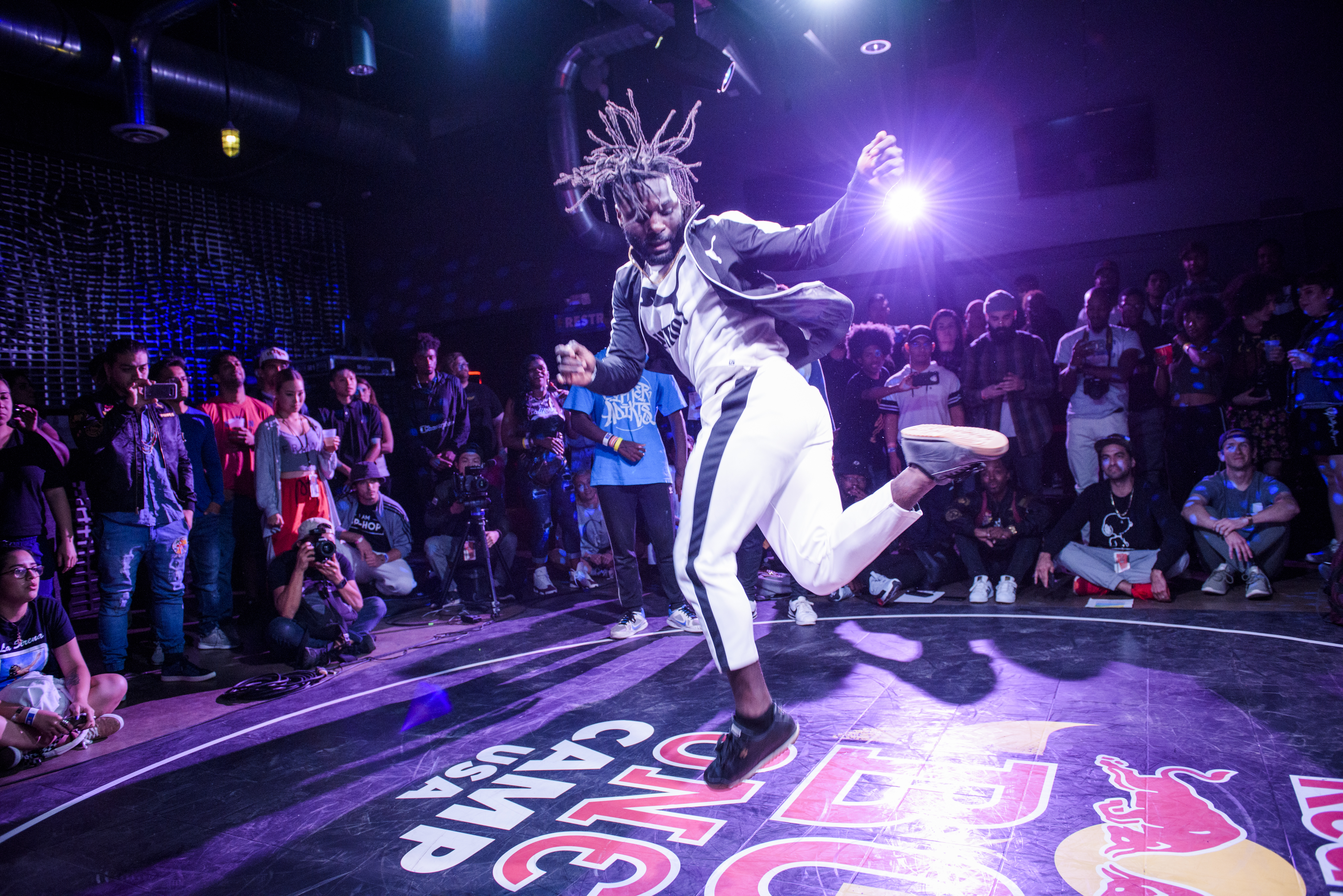
As breakdancing and hip-hop culture boom worldwide, inevitably taking on new influences and expanding in its reference points, there’s been some pushback on the form changing at all. It makes sense that some people would be so protective of a culture that they feel has saved their lives. This old-school faction of hip-hop is holding on to an era of the genre that they miss. They feel threatened by today’s dances like the drop, hit ‘dem folks, the BlocBoy JB, milly rocking, and the Billy Bounce. But Crazy Legs reminded the crowd that we have to embrace this new wave of artists. Because it’s wonderful to have a foundation, but useless if no one builds on it.
“Let them live,” he said. “You’re outnumbered. They’re not doing the same thing as you…give it up. They have to go through their own growing pains. It’s kinda like an ‘each one, teach one.’ Then you have to let them have their own wisdom and what they’re gonna do with that information. I refuse to be against them because that’s when you make yourself irrelevant and start to tear down the bridge.”
He also reminded any old school purists that back in the day they were the ones who people couldn’t understand. He urged artists to fight against this “off my lawn” mentality as they encounter the new generation of hip-hop.
“We tend to forget where we were at the same age, and we don’t apply that to the dialogue that we have, where we’re talking down to them,” he said. “If you don’t talk down to them and you just build with them, you may find yourself dancing to the same songs.”
At the end of the camp, a dance battle champ was crowned, winning the chance to travel to Switzerland to compete. This year’s winner, Zebra, told us that this win was particularly special for him because his baby boy was recovering from brain surgery in the hospital. For him, the battle and the camp meant everything. The experience was cathartic — a way to keep his mind off of the harsh realities of his current day to day. That sentiment could be applied easily to why hip-hop came to be in the first place, and why so many continue to be drawn to it.
Zebra’s emotion and passion is shared by so many dancers from all over the world. For them, it was never just about politics, or social issues, or pushing oneself to be the best just for bragging rights. Hip-hop was about the community it created, about having a whole squad of people to understand you as you express yourself in one of the only ways you know how. It was about being a part of a movement and culture that has its foundations in free expression, progress, and inclusivity. It’s an artform where you push yourself to be the greatest at something in a world that won’t always let you be great. And at the Red Bull BC Dance Camp, I saw a whole new wave of people just waiting to embrace that greatness.
